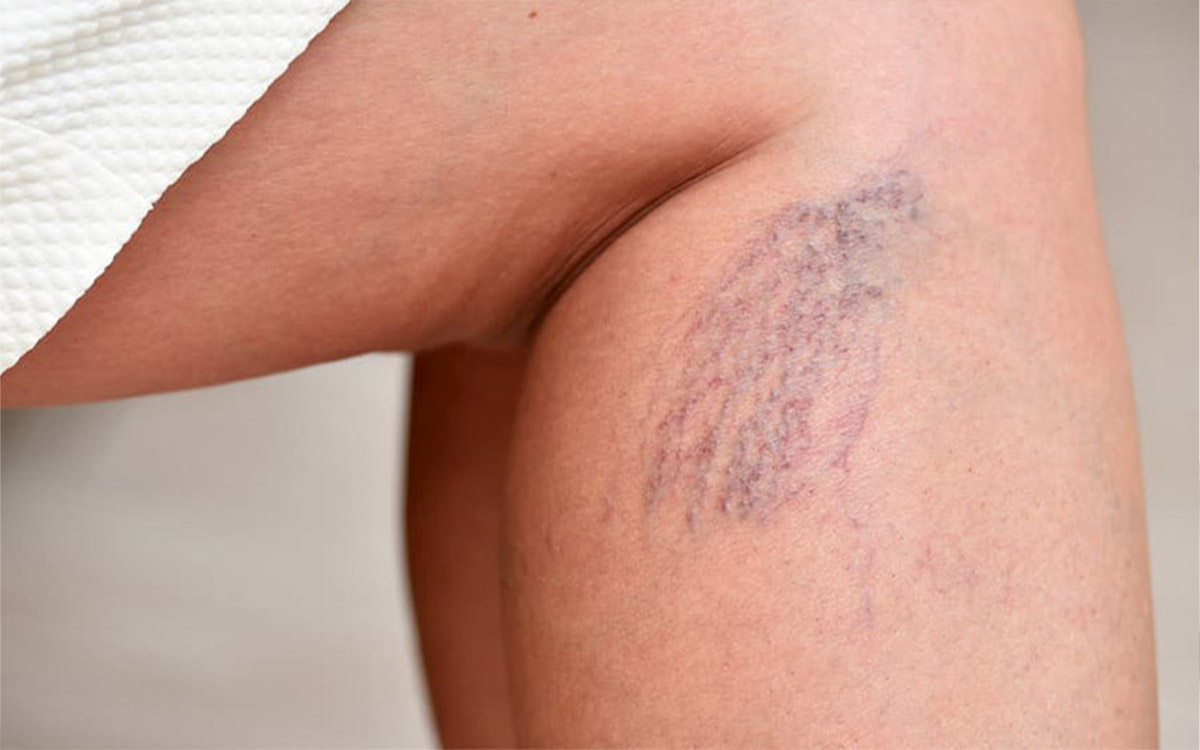Assoc. Prof. Dr. İlker Kiriş
Cardiovascular Surgery

Concerning the capillary varicose veins, the varicose veins, which are thin or medium in thickness and which disturb patients especially aesthetically, are understood. Thin capillary varicose veins are red or purple and are not bulging on the skin surface.
These varicose veins, which are called "telangiectasia" in medical terminology, are smaller than 0.2 millimeters in diameter, and they can sometimes cause a burning sensation in the legs. Medium-sized varicose veins are blue or green and might be slightly bulging on the skin surface. The diameters of these varicose veins, which are called "reticular veins" in medical terminology, are between 0.2-2 millimeters. Patients with thin or medium-sized varicose veins consult a doctor to ensure that the poor appearance especially on their legs is restored.
The patient should first be seen by a Cardiovascular Surgeon. The 'anamnesis' should be taken from the patient, which means, a conversation should be made mutually about their complaints and medical history. Then, the patient should be examined for signs of venous insufficiency and varicose veins. Finally, the leg vein ultrasonography should be performed. As a result of these steps, a patient-specific treatment plan can be created.
Before initiating an aesthetic treatment for capillary varicose veins, it should be shown that there is no significant disorder in the leg venous ultrasonography examination. Because if there is "venous reflux," i.e. the blood leakage from the deep vein to the superficial vein especially at the groin level, and if the sclerotherapy sessions are initiated without the necessary treatment, the result will be a failure. In the treatment of varicose veins, gradual treatment is ideal. In other words, it is not appropriate to treat all types of varicose veins in the same session. Because there are some procedures to be carried out under sterile conditions like wiping the leg with sterile solution. Unlike these procedures, there are also other procedures performed in the outpatient clinic environment and at room temperature.
Before the treatment of capillary varicose veins, the patient's legs should be recorded with medical photo shooting. A written and signed permission of the patient is obtained before taking the photo. It is shot anonymously. Photo documentation is vital for an objective comparison before and after treatment. Besides, the dark spots, moles, acne scar, or skin cracks on the leg before the treatment are recorded in this manner.
Firstly, well-planned sclerotherapy sessions form the basis of the treatment. At this point, there is a strategy from thick to thin. Whether the varicose veins are to receive sclerotherapy or transdermal laser depends on the experience and cooperation of the treatment team. The transdermal laser is a method with a substantial risk of side effects such as skin burns and scarring. Therefore, it should be carried out with meticulous planning and carefully, considering the skin type of the patient. Transdermal radiofrequency treatment is suitable for the treatment of varicose veins that are usually too thin to be inserted with a needle tip. Besides, it may be a proper treatment method for the treatment of considerably thin varicose veins that remain after the sclerotherapy sessions are completed.
It takes time to achieve ideal results in the aesthetic treatment of capillary varicose veins. Therefore, patients need to be strong. The treatment should not be done in summer as much as possible because sunlight increases the risk of dark spots. An average of 4 - 6 months should pass for significant improvement that can be demonstrated objectively with photoshoots between before and after the treatment.
In conclusion, required assessments should be made completely before the aesthetic treatment of capillary varicose veins. Patients should be informed and realistic conversation should be made about expectations. Patients should be provided with the necessary time and attention. After the treatment planning, the patient should be informed about the anticipated number of sessions, cost, and possible results. If you also have capillary varicose veins, you should consider meeting with and getting examined by Assoc. Prof. Dr. İlker Kiriş, who particularly and intensively deals with the aesthetic treatment of varicose veins, "aesthetic phlebology," in his daily professional practices.

